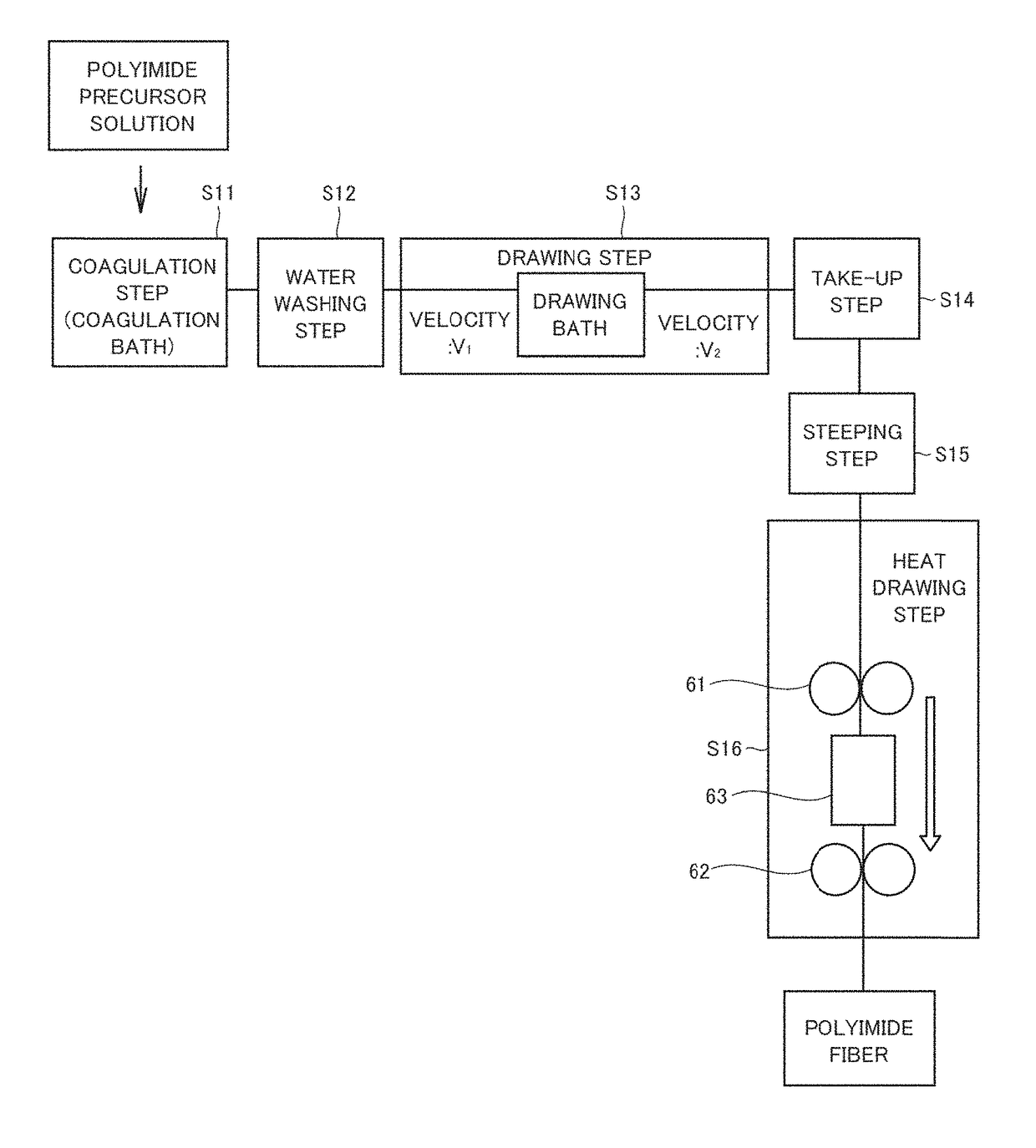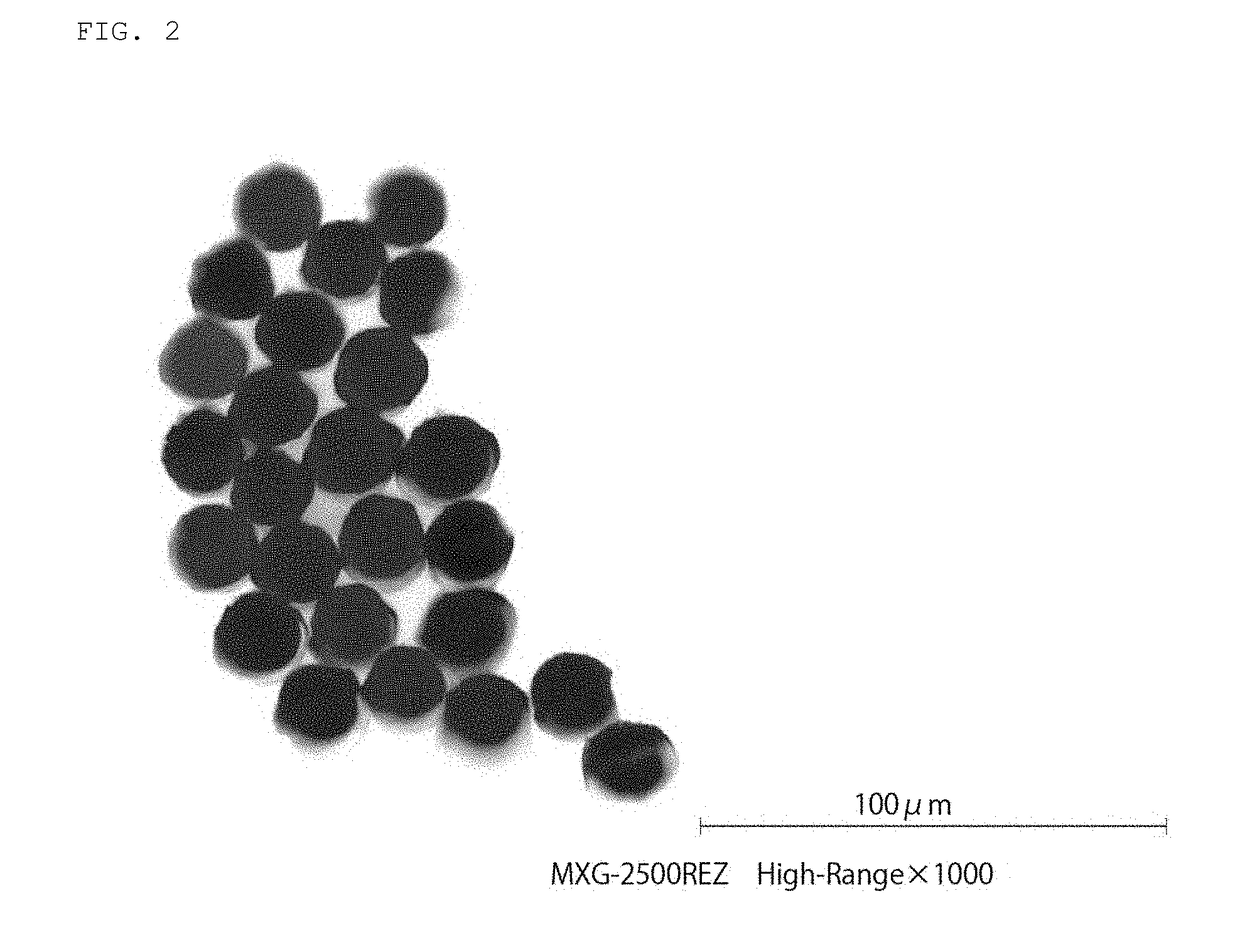Polyimide fibre and method for producing polyimide fibre
a polyimide fiber and fiber technology, applied in the direction of dry spinning methods, wet spinning methods, textiles and papermaking, etc., can solve the problems of rapid solidification of dope and obtained fibers, inability to use insoluble polyimide fiber materials, and limited type of polyimide components in polyimide fibers, so as to achieve excellent physical properties such as strength
- Summary
- Abstract
- Description
- Claims
- Application Information
AI Technical Summary
Benefits of technology
Problems solved by technology
Method used
Image
Examples
example 1
[0104]1. Preparation of Polymer-Type Polyimide Precursor Solution
[0105]To a 3-L container for synthesis attached with a stirring blade, 136 g of para-phenylenediamine (PPD) and 2,224 g of N-methylpyrrolidone were charged to dissolve PPD in N-methylpyrrolidone. Then, 259.0 g of 3,3′,4,4′-biphenyltetracarboxylic dianhydride (BPDA) and 82.30 g of pyromellitic dianhydride (PMDA) were charged to allow reaction at room temperature in order to prepare a polyimide precursor solution having a concentration of 17.7% by weight.
[0106]As shown in Table 1, the composition (molar ratio) between BPDA, PMDA and PPD was BPDA:PMDA:PPD=70:30:100.
[0107]To the obtained polyimide precursor solution, a solution obtained by dissolving 21.41 g of 1,3-diazole (Log P: −0.02, pKa: 6.99) in 40.41 g of N-methylpyrrolidone was then added to obtain a polyimide precursor solution for spinning. The concentration molar ratio of 1,3-diazole relative to 1 mole of tetracarboxylic dianhydride (BPDA+PMDA) was 0.25 moles as...
example 2
[0113]In Example 2, a polyimide fiber was produced by using the polyimide precursor solution having the same composition as Example 1. However, in Example 2, a polyimide precursor solution for spinning was obtained by adding to the resulting polyimide precursor solution a solution obtained by dissolving 10.71 g of 1,3-diazole (Log P: −0.02, pKa: 6.99) in 20.22 g of N-methylpyrrolidone. The concentration molar ratio of 1,3-diazole relative to 1 mole of tetracarboxylic dianhydride (BPDA+PMDA) was 0.125 moles as indicated in Table 1.
example 3
[0114]In Example 3, a polyimide fiber was produced by using the polyimide precursor solution having the same composition as Example 1. However, in Example 3, a polyimide precursor solution for spinning was obtained by adding to the resulting polyimide precursor solution a solution obtained by dissolving 34.26 g of 1,3-diazole (Log P: −0.02, pKa: 6.99) in 64.67 g of N-methylpyrrolidone. The concentration molar ratio of 1, 3-diazole relative to 1 mole of tetracarboxylic dianhydride (BPDA+PMDA) was 0.40 moles as indicated in Table 1.
PUM
| Property | Measurement | Unit |
|---|---|---|
| specific gravity | aaaaa | aaaaa |
| octanol-water partition coefficient | aaaaa | aaaaa |
| pKa | aaaaa | aaaaa |
Abstract
Description
Claims
Application Information
 Login to View More
Login to View More - R&D
- Intellectual Property
- Life Sciences
- Materials
- Tech Scout
- Unparalleled Data Quality
- Higher Quality Content
- 60% Fewer Hallucinations
Browse by: Latest US Patents, China's latest patents, Technical Efficacy Thesaurus, Application Domain, Technology Topic, Popular Technical Reports.
© 2025 PatSnap. All rights reserved.Legal|Privacy policy|Modern Slavery Act Transparency Statement|Sitemap|About US| Contact US: help@patsnap.com



